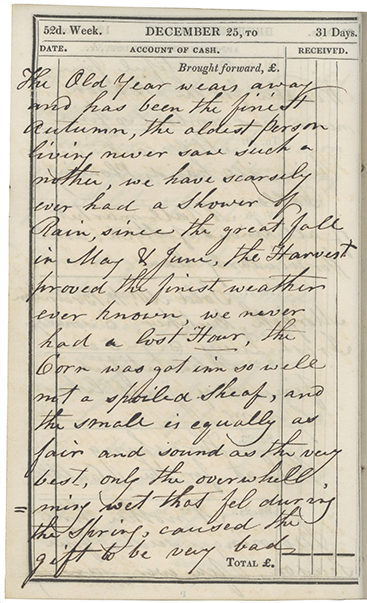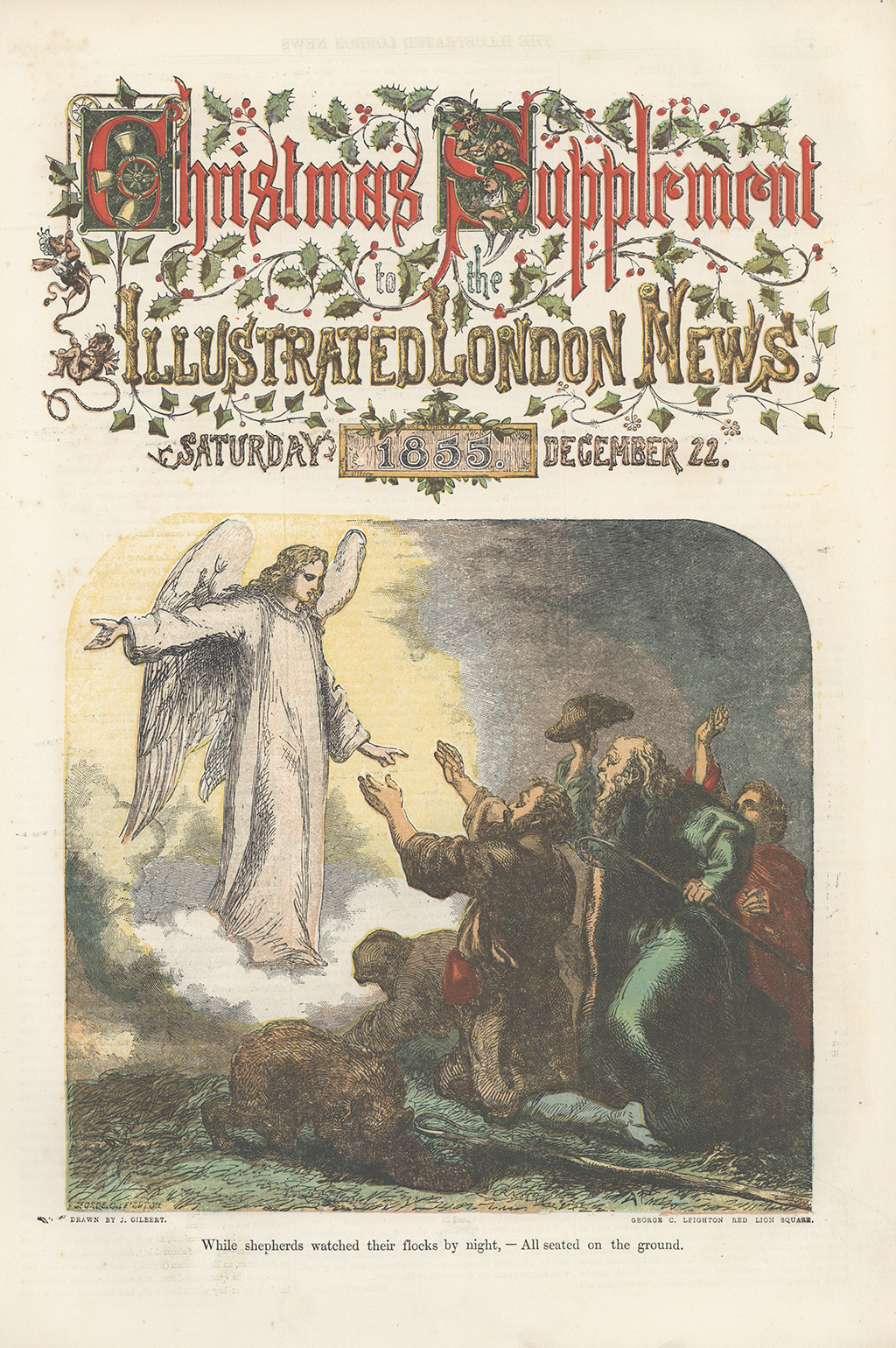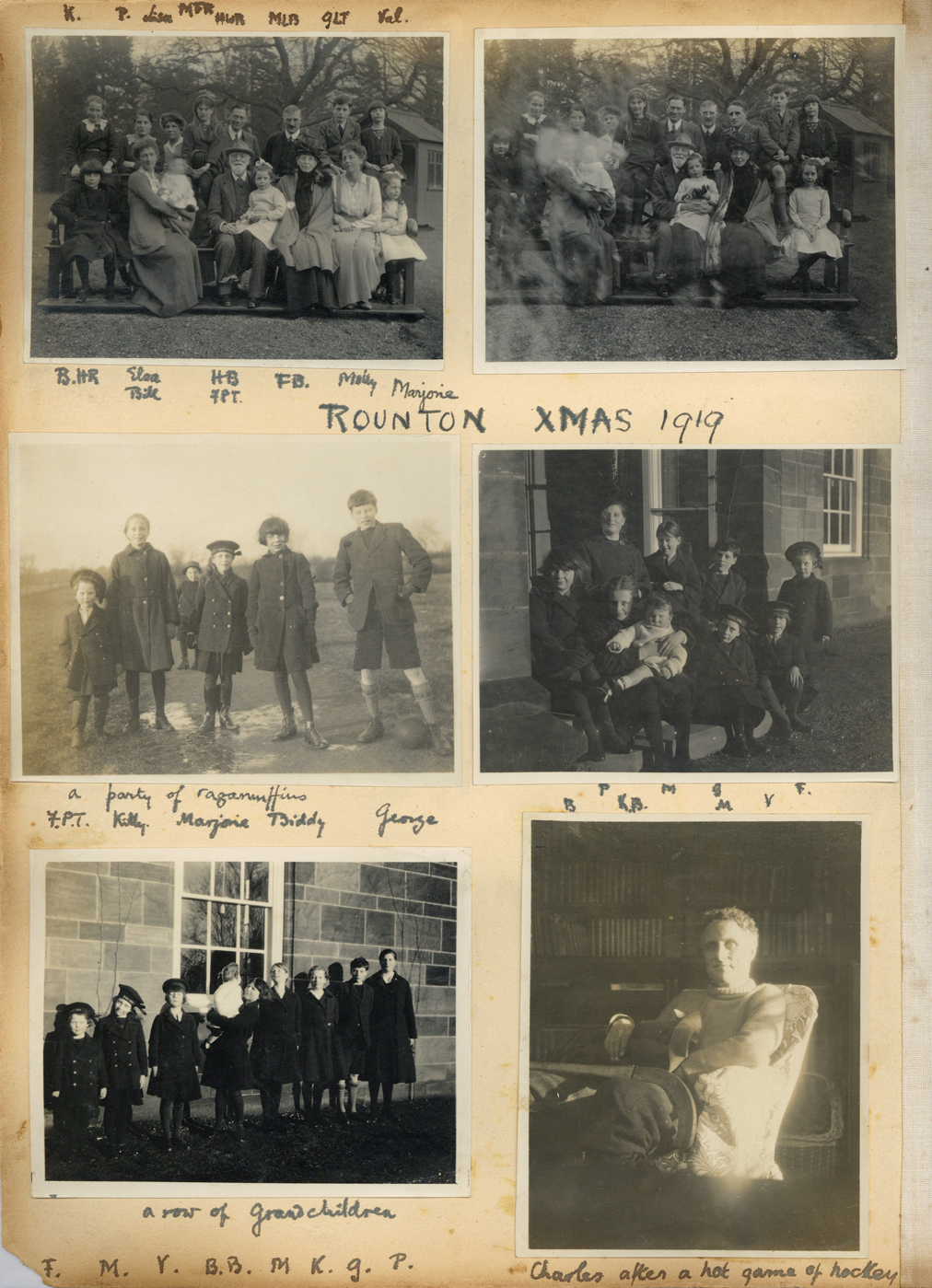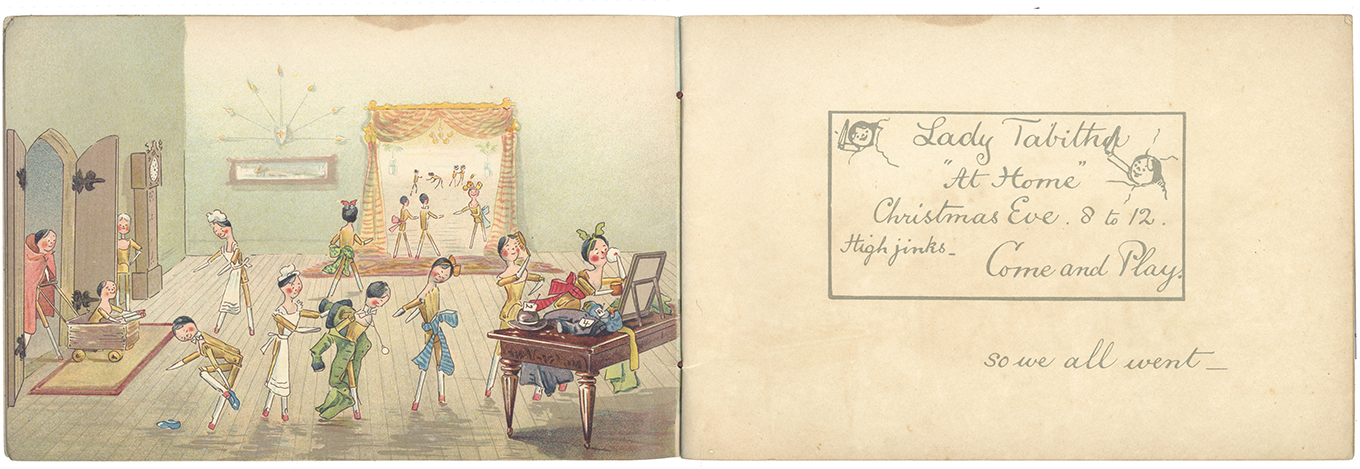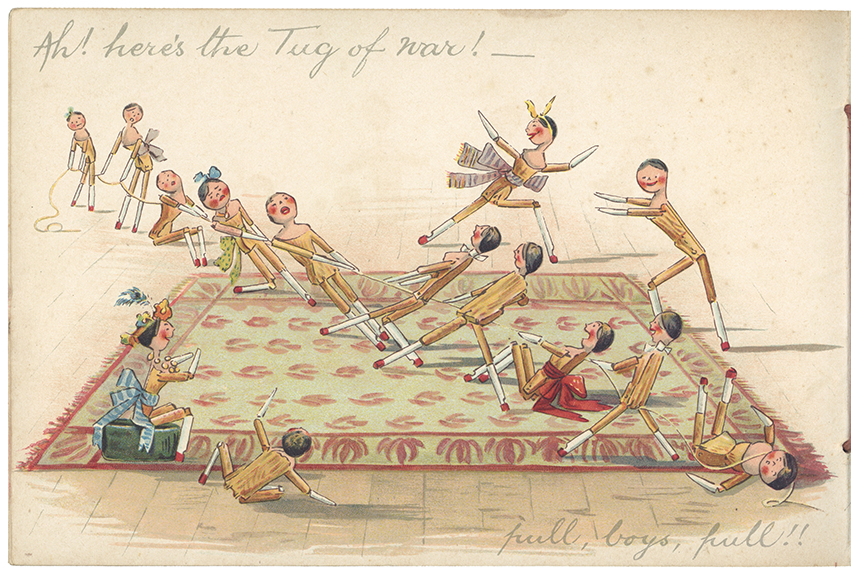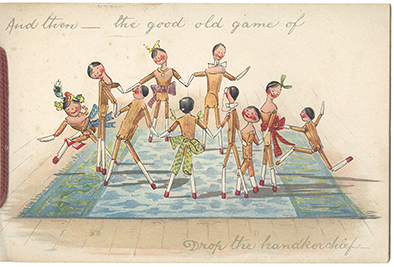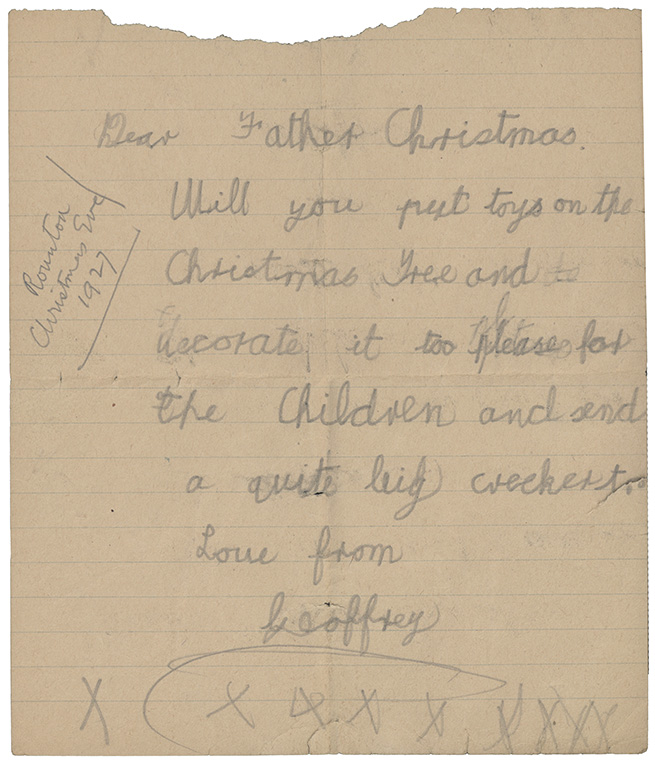25th December 1843 diary entry from William Brewis’ diary (Brewis Diaries, WB/1/9)Christmas Day diary extract from William Brewis’ 1843 diary,
The Old year wears away and has been the finest autumn, the oldest person living never saw such another, we have scarsely ever had a shower of Rain, since the great fall in May & June, the Harvest proved the finest weather ever known, we never had a lost Hour, the corn was got in so well not a spoiled sheaf, and the small is equally as fair and sound as the very best, only the overwhell rainy wet that fel during the spring, caused the gift to be very bad
The diaries of William Brewis (1778-1850), farmer, of Throphill Farm, Mitford, Northumberland, cover the years 1833-1850 and are a fascinating compilation of information and anecdotes about farming matters and the local Mitford community. Alongside daily notes of the farming year, Brewis has added comments on local and national events of a political and societal nature.

